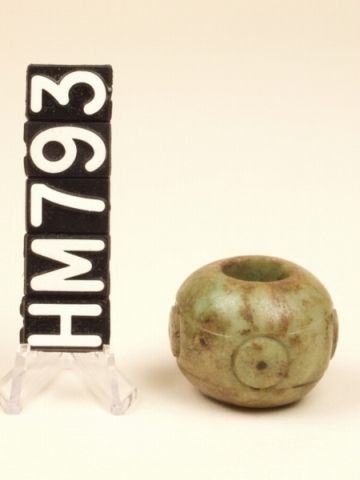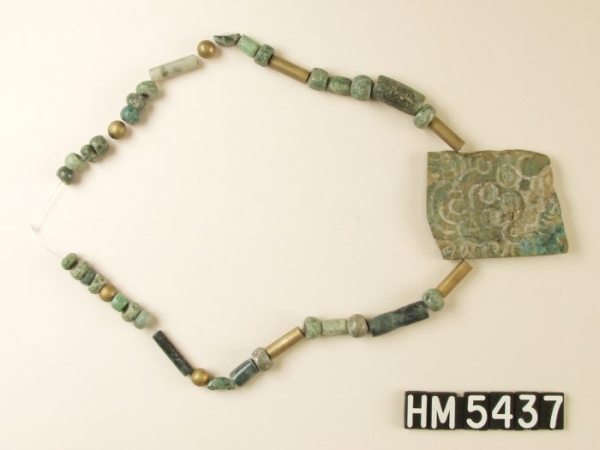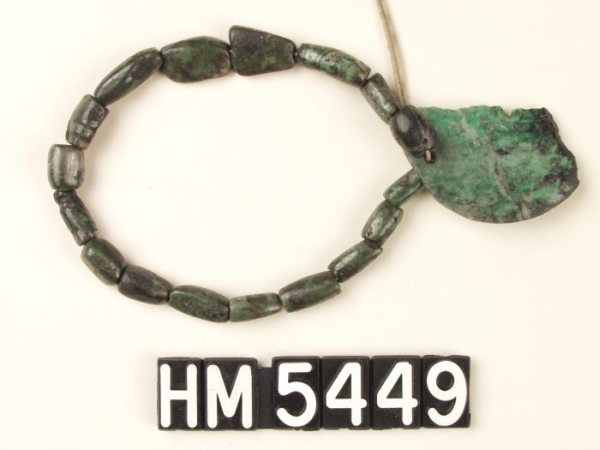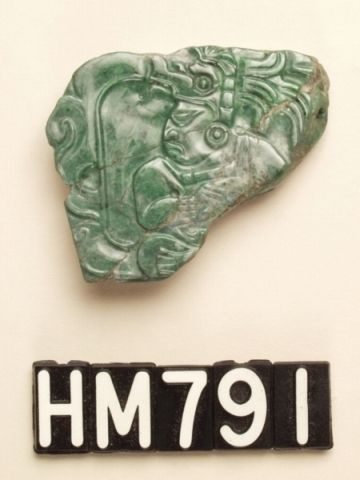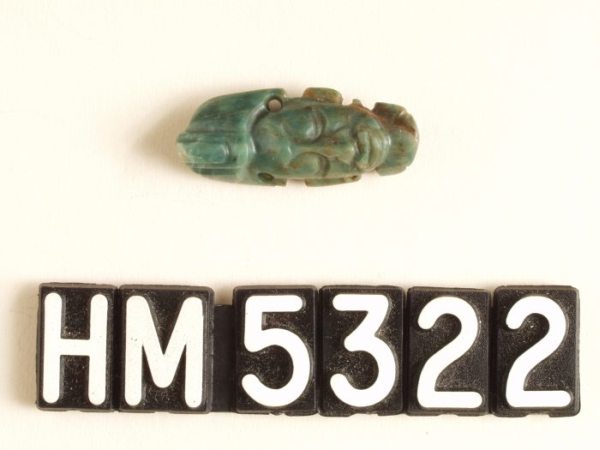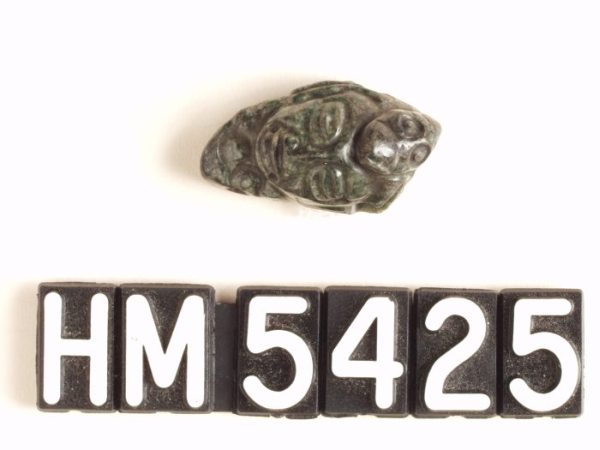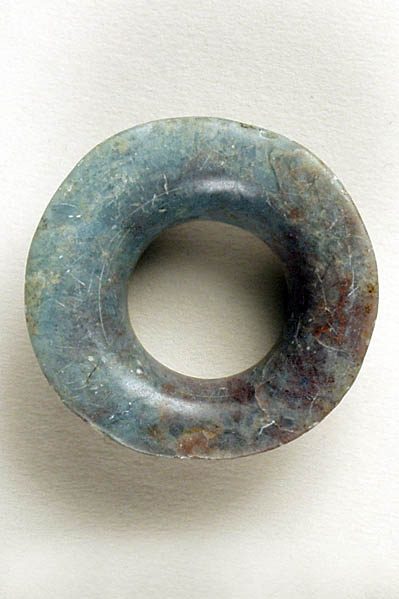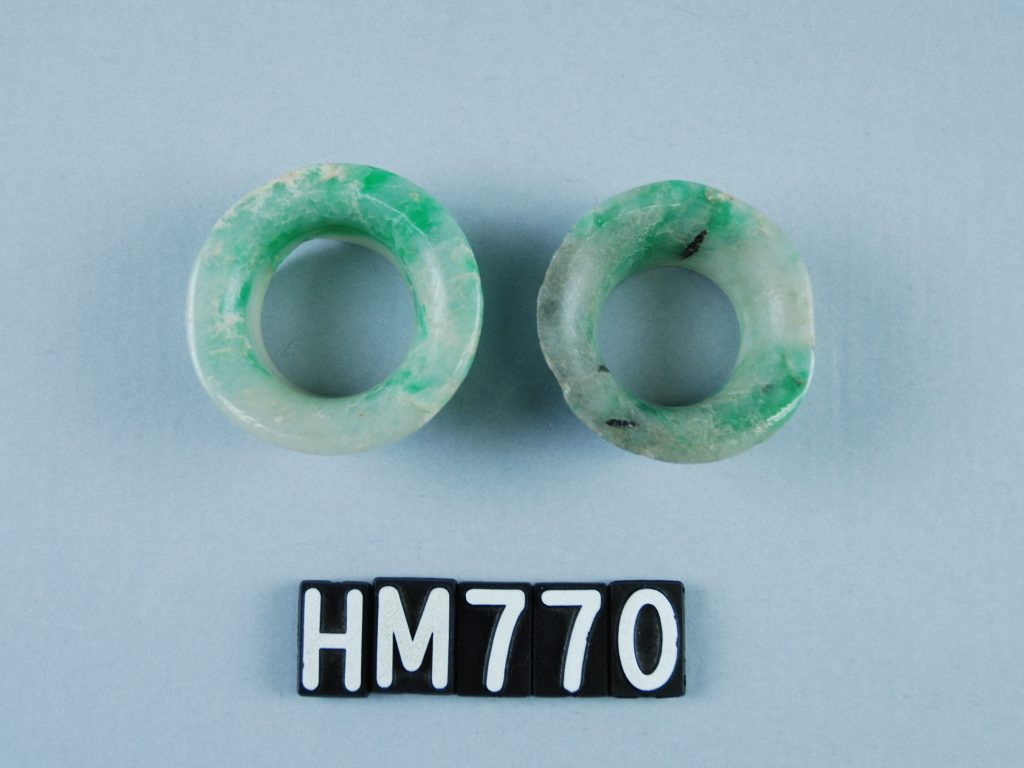Ornamentation
Bodily ornamentation was a part of Maya culture, and commoners and elite alike displayed various fashions. Peasant women often adorned themselves with ornaments for their long, braided hair, as well as single and multiple stranded bead necklaces, pendants, ear ornaments and nose buttons. For poorer women, such items were made of albite, shell, amber, and wood. Higher status women wore similar adornments made of precious stones like jade, and high-ranking women would often wear an entire cape of jade, as well as necklaces. Male dress also incorporated bodily ornamentation, and included necklaces, ear spools, pectoral plates, wrist and ankle cuffs, nose and mouth pieces, and headdresses—all were key indications of social standing and wealth. Many of the ornaments worn, particularly earspools, were shaped to represent a flower. Another important indication of social status was skull deformation and crossed eyes. To the Mayas, both were marks of profound beauty. Mothers would often tie boards to the foreheads of their male infants, literally forcing the skull to grow into a high-protruding cone shape as the child aged. Similarly, mothers would attach a piece of resin from a strand of hair hanging between the eyes of a young child, encouraging the eyes to focus inward. Decorative scars and tattoos were also popular between both peasant and elite classes.
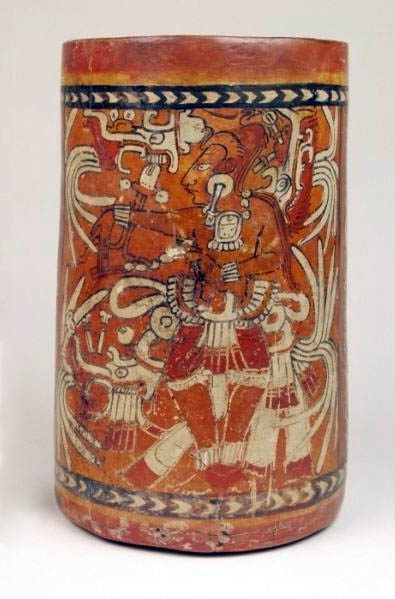
Maya Cylinder Vase
AD 600 – 900
Chamá, Alta Verapaz, Guatemala
The young Maize god wearing an elaborate pectoral ornament.
William P Palmer, III Collection
HM1183

